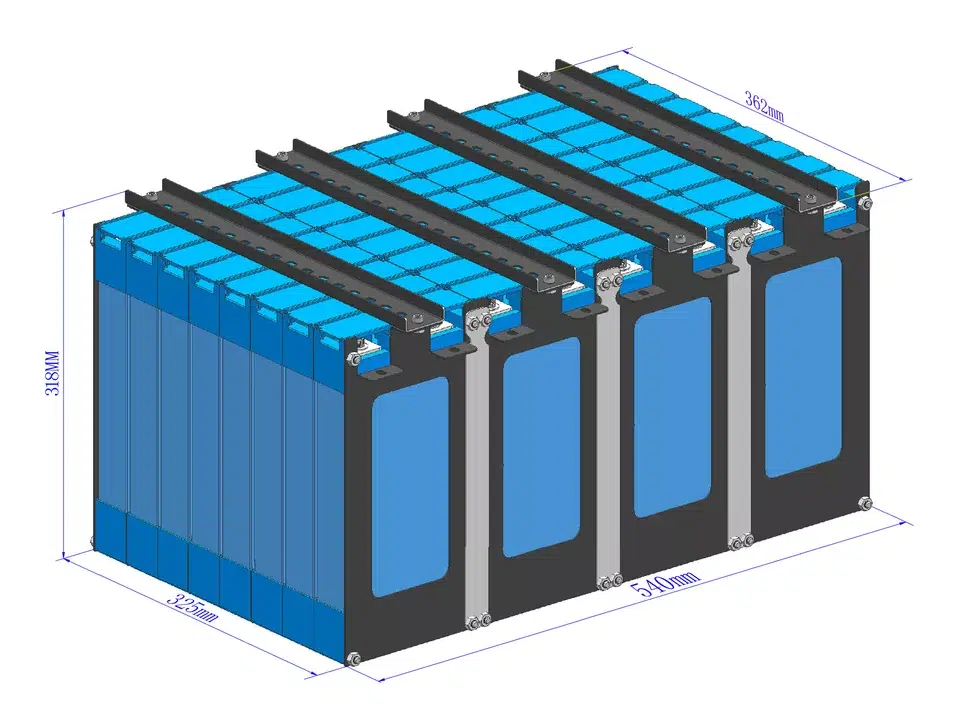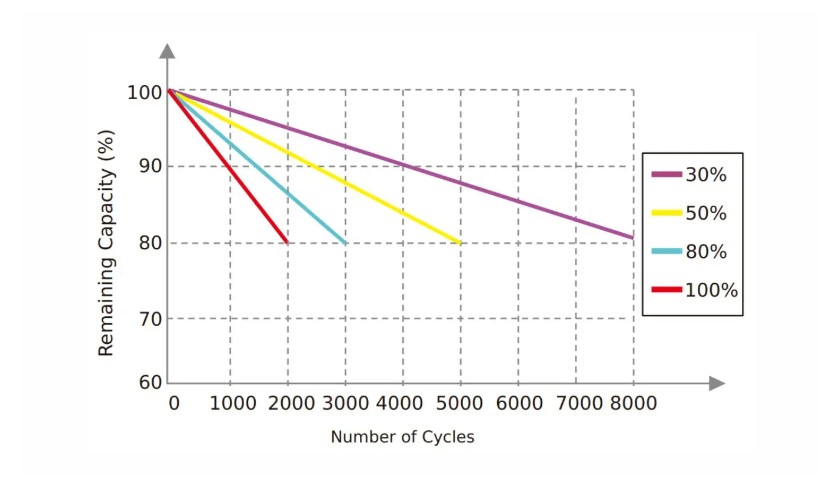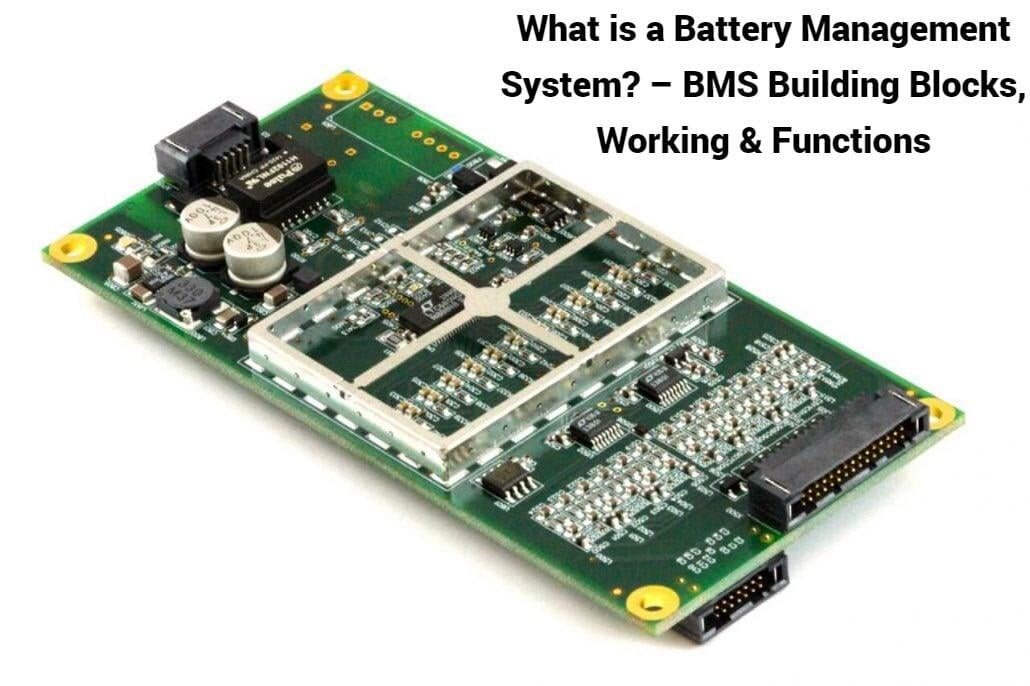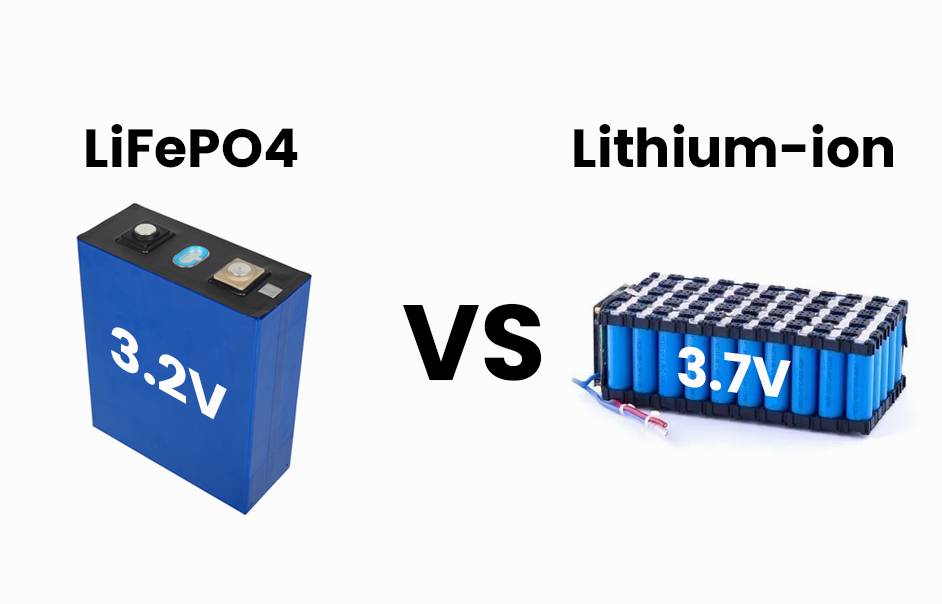최근에는, 리튬철인산염 (LiFePO4) batteries have become more and more popular as a reliable and cost-effective energy storage solution. They are particularly suitable for use in electric vehicles, 재생 가능한 에너지 시스템, backup power supplies and other high-power applications. 하지만, with so many different LiFePO4 lithium batteries on the market, choosing the right one for your needs can be challenging. 이 기사에서는, we will explore how to choose a quality LiFePO4 lithium battery.

What is LiFePO4 Lithium Battery?
LiFePO4, short for lithium iron phosphate, is a lithium-ion battery that uses lithium iron phosphate (LiFePO4) as a positive electrode and a metal-backed graphite-carbon electrode as a negative electrode. It is rechargeable and falls into the broader category of lithium-ion batteries. LiFePO4 lithium batteries are known for their high energy density, long cycle life and excellent thermal stability. Unlike other lithium-ion chemical materials, LiFePO4 lithium batteries are inherently safer due to their stable chemical structure and lower risk of thermal runaway.
The Advantages of LiFePO4 Lithium Batteries
안전: LiFePO4 lithium batteries are considered to be one of the safest lithium-ion battery chemicals available today. Its structure is stable and the risk of thermal runaway is low. They are not prone to overheating or burning, so the likelihood of an accident or fire is very small.
긴 사이클 수명: 다른 리튬 이온 배터리에 비해, LiFePO4 lithium batteries can withstand multiple charge and discharge cycles. They typically have a useful life of 2,000 에게 5,000 times or more, depending on the particular brand and conditions of use. This means you can use these batteries for many years without having to replace them frequently.
높은 에너지 밀도: LiFePO4 lithium batteries have a high energy density, and they are able to store a large amount of energy in a relatively small volume. This makes them ideal for applications where space is limited, such as electric vehicles and portable devices.
넓은 작동 온도 범위: This battery works well in a variety of temperatures, whether hot summer or cold winter does not affect their performance. This makes LiFePO4 lithium batteries suitable for a variety of different climatic and environmental conditions.
고속 충전: The LiFePO4 lithium battery charges very fast, which means you can fully charge the battery in a shorter amount of time, reducing the waiting time and downtime of the device. This is especially useful for applications that require high efficiency and quick turnaround.
Disadvantages of LiFePO4 Lithium Battery
낮은 에너지 밀도: Although the energy density of LiFePO4 lithium batteries is considerable, it is slightly lower compared to some other types of lithium-ion batteries (such as lithium cobalt oxide batteries, LiCoO2). 간단히 말해서, energy density represents how much energy a battery can store at the same physical size. 그러므로, the LiFePO4 lithium battery may have a slightly lower capacity than some other battery types at the same size.
높은 초기 비용: The upfront cost of LiFePO4 lithium batteries is usually higher than other types of batteries. That means you have to pay more when you buy. 하지만, 장기적으로는, LiFePO4 lithium batteries have a longer life and more stable performance, so despite the large initial investment, their long life and excellent performance often make the money well spent.
Factors to Consider When Buying a LiFePO4 Battery
When choosing the best LiFePO4 battery for your specific needs, you should consider several key factors:
Capacity and Voltage
When choosing a LiFePO4 lithium battery, capacity and voltage are two key factors. Capacity determines how much energy a battery can store and is usually measured in ampere-hours (아) or watt-hours (와트시). The specific requirements depend on the energy requirements of the equipment. Small devices such as flashlights or smartphones may only need 500mAh, while larger devices such as electric cars or home energy storage systems require hundreds to thousands of Ah of capacity.
In terms of voltage, the nominal voltage of LiFePO4 lithium batteries is usually 3.2 volts per unit, so it is necessary to ensure that the battery voltage matches the system voltage. If the device requires a specific voltage, such as a 12-volt motor, multiple batteries may need to be connected in series to reach the desired voltage.
배터리 관리 시스템 (비엠에스)
The battery management system (비엠에스) is an integral part of the LiFePO4 lithium battery pack. It acts as the “brain” of the battery, monitoring and managing all aspects of the battery’s operation, including ensuring that all parts of the battery work evenly, regulating the temperature, and preventing the battery from overcharging and discharging. When buying a LiFePO4 lithium battery, be sure to choose one with a reliable BMS to optimize battery performance and improve safety.
Cycle Life and Warranty
Cycle life refers to the number of times a battery can be charged and discharged before its capacity drops significantly. High-quality LiFePO4 lithium batteries typically have a cycle life of between 2,000 그리고 6,000 사이클. Batteries with a shorter cycle life need to be replaced more frequently, which can cost a lot of money and time.

LiFePO4 lithium batteries have a very long cycle life, but the specific life will vary depending on battery quality and conditions of use. Usually at 80% 토출 깊이, 이상 2,000 cycles can be carried out, and some high-quality batteries can even reach 6,000 times or more. Check the manufacturer’s specifications and warranty information to help select a battery with a satisfactory cycle life.
Size and Weight
The physical size and weight of LiFePO4 lithium batteries are crucial considerations, especially if space is limited or weight is limited in your application. Evaluate the size and weight of the battery to make sure it fits in your available space and doesn’t affect the overall performance or portability of your system.
Brand Reputation and Support

When investing in LiFePO4 lithium batteries, it is crucial to choose a well-known brand known for producing high quality and reliable products. Research your brand’s reputation, customer reviews and after-sales support to ensure you get quality batteries and excellent customer service. Choose brands with a proven track record that typically offer product guarantees and warranties, as well as customer support if something goes wrong. Do your research, read reviews, and find trustworthy brands.
가격
마지막으로, consider the price of the battery. The price of LiFePO4 lithium batteries will vary depending on capacity, cycle life and other features. While it’s tempting to choose the cheapest battery, it’s also important to consider the overall value for money. Higher-priced batteries may have longer cycle life, faster charging times, and better safety features, making them a more cost-effective option in the long run.
The Safety of LiFePO4 Battery is Guaranteed
Safety is always a crucial consideration when using batteries, and the LiFePO4 lithium battery is no exception. Look for batteries with built-in safety features, 과충전과 같은, 과방전, 및 단락 보호. These features will help prevent battery damage or overheating, which can be dangerous.

Here are some common safety issues associated with LiFePO4 lithium batteries:
과충전: Overcharging can lead to gas production and, in severe cases, swelling or even rupture of the battery.
과열: Lithium iron phosphate batteries generate heat when charged or discharged, and if this heat is not effectively dissipated, it will cause the battery to overheat and catch fire.
Short circuit: If the positive and negative electrodes of the battery are in poor contact, or the battery is punctured or damaged, a short circuit may occur.
Mechanical damage: Physical damage to the battery, such as squeezing or puncturing, can cause an internal short circuit, which can trigger overheating and, 극단적 인 경우, fire or explosion.
To mitigate these safety concerns, the manufacturer’s recommended charging and discharging procedures must be followed to avoid exposing the battery to extreme temperatures or causing physical damage. 게다가, the use of high-quality chargers and battery management systems can help monitor the performance of the battery and prevent overcharging or overheating.
Do you need a Battery Management System (비엠에스) in LiFePO4 ?
예, it is very important to buy LiFePO4 lithium batteries with a battery management system (비엠에스). BMS ensures optimum battery performance, safety and service life. You need a BMS for the following reasons:
Battery Equaliser
The LiFePO4 lithium battery pack consists of multiple cells. 시간이 지남에 따라, battery performance can change, resulting in uneven charging levels. BMS actively monitors and balances the charging of all batteries to prevent imbalance, improve overall performance and extend battery life.
Overcharge and Overdischarge Protection
The BMS continuously monitors the battery voltage to avoid overcharging or overdischarging, ensuring that the voltage is within a safe range, thereby protecting battery performance and safety. If the voltage approaches a dangerous level, the BMS will intervene to stop the charging process or cut off the power to prevent overcharging. 비슷하게, BMS prevents the battery from discharging beyond safe levels, thereby protecting the battery from damage.

Fault Detection and Protection
The BMS has advanced monitoring capabilities to detect faults or anomalies in the battery pack. It can identify short circuits, 과전류, or voltage imbalances. When a fault is detected, BMS takes immediate action, such as isolating the faulty battery or shutting down the entire battery pack, to prevent further damage or safety risks.
Temperature Regulation
Temperature is a key factor affecting the performance and safety of LiFePO4 lithium batteries. 극한의 온도 (너무 높든 너무 낮 든) can reduce battery capacity and shorten its service life. The BMS monitors the battery temperature and, 필요한 경우, activates the cooling or heating mechanism to maintain the optimal temperature range, ensuring battery performance and extended life.
요금 상태 (SOC) 모니터링
Knowing the charging status of a LiFePO4 lithium battery is critical to accurately estimating its remaining capacity and planning your power usage. The BMS continuously measures the SOC of the battery and provides real-time data to help optimize battery utilization and avoid excessive discharge or low charge.
How to Calculate LiFePO4 Battery Capacity?

Calculating the LiFePO4 battery capacity is simple. Battery capacity is usually expressed in ampere-hours (아), which indicates the amount of power a battery can provide in a given period of time. Here are the steps:
1. Determine average current consumption: Find out the average current consumed by your device during use (앰프에서, ㅏ).
2. Estimate running time: Estimate how long you want the battery to power the device (몇 시간 만에, hr).
3. Calculate capacity: Multiply the average current consumption by the running time to obtain the battery capacity (단위: 암페어시, 아).
예를 들어:
The average current consumption of your device is 5A.
You want the battery to power your device for 10 시간.
그 다음에, the battery capacity is calculated as follows:
용량 (아) = Average current (ㅏ) x running time (시간)
용량 (아) = 5A x 10 시간
용량 (아) = 50Ah
Keep in mind that this calculation only provides estimates and does not take into account factors such as cell efficiency, voltage fluctuations, or safety margins. To ensure the best performance and battery life, it is recommended to choose a battery with a capacity slightly higher than the calculated value.
LiFePO4 With Lithium-ion Battery

LiFePO4 batteries and other lithium-ion batteries are popular choices for a variety of applications. 하지만, there are some key differences between the two chemicals:
보안
LiFePO4 lithium batteries are safer than other lithium-ion batteries. Their chemical structure is more stable and there is a lower risk of accidents or fires. Some lithium-ion batteries, such as lithium cobaltate (LiCoO2), have a higher risk of thermal runaway and require more safety measures.
사이클 수명
LiFePO4 lithium batteries have a significantly longer cycle life than other lithium-ion batteries. It can carry out more than 2,000 에게 5,000 충전 및 방전 주기, and the capacity is maintained well. 대조적으로, other lithium-ion batteries have a shorter life, so LiFePO4 batteries are suitable for applications that require long-term durability.
에너지 밀도
LiFePO4 lithium batteries have a higher energy density, but not as high as some lithium-ion batteries, ~와 같은 코발트산리튬 (LiCoO2) or lithium manganate (limn2o4), which can store more energy in a smaller volume, but are less safe.
비용
The initial cost of LiFePO4 lithium batteries is higher, 하지만, 장기적으로는, their longer service life and superior performance make the initial investment worthwhile. 대조적으로, other lithium-ion batteries, although low upfront costs, need to be replaced more frequently and have higher long-term costs.
Impact on The Environment
LiFePO4 lithium batteries are more environmentally friendly and contain non-toxic materials with less risk of dangerous chemical reactions. They can be recycled and reused to reduce their environmental impact. 대조적으로, other lithium-ion batteries may have a greater impact on the environment.
Where Can I Buy LiFePO4 Lithium Battery?
GycxSolar is the best place to buy lithium iron phosphate batteries. These batteries perform better than most batteries on the market. They have features such as BMS, 블루투스, built-in heater and warranty. 게다가, you get the brand name of the world’s leading LiFePO4 lithium battery supplier.
결론
With the above information, you can more easily choose the best battery and distinguish between LiFePO4 and other lithium-ion batteries. A good battery can keep a device running for a decade, but choosing the wrong one can lead to danger, failure and chasing the manufacturer for a replacement. So taking the time to choose your battery carefully can save you a lot of trouble later.
전반적인, LiFePO4 lithium batteries are a worthwhile investment. GycxSolar에서, we understand that the core of any solar system is the quality of the solar cell. That’s why we are committed to manufacturing high-performance solar cells that deliver superior power output and durability.
자주하는 질문
Are all LiFePO4 lithium batteries the same?
아니요, all LiFePO4 batteries are not the same. Batteries produced by different manufacturers can vary in quality. These batteries also have a variety of types, sizes, 역량, voltage ratings and functions, so you need to pay attention to these factors when choosing.
Can I use LiFePO4 without BMS?
Although it is technically possible to use LiFePO4 lithium batteries without a battery management system (비엠에스), experts strongly recommend against it. BMS is important for monitoring and protecting batteries, preventing problems such as overcharging, 과방전, 그리고 과열.
How to tell if the LiFePO4 lithium battery is broken?
If you find that the lithium iron phosphate battery capacity becomes smaller, the internal resistance increases, the voltage is unstable, or there is physical damage, these may be signs of battery problems. 이 경우, it is recommended to stop using the battery immediately and find a professional to check.
Should I charge my LiFePO4 lithium battery to 100% 매일?
예. Experts recommend regularly charging LiFePO4 lithium batteries to 100% 용량. It is not affected by the “memory effect” suffered by older battery technology. 그러므로, charging it regularly to its total capacity helps maintain its overall performance and ensures optimal battery health.
